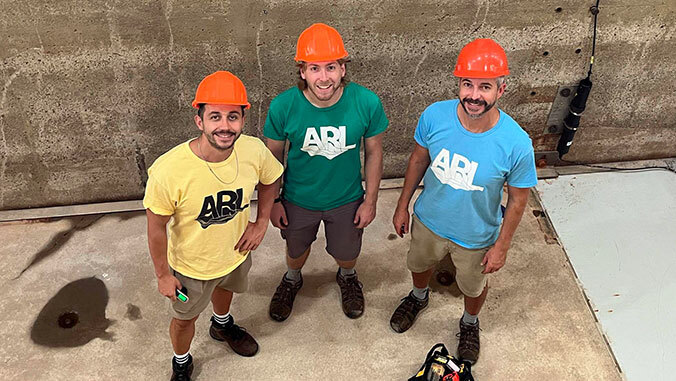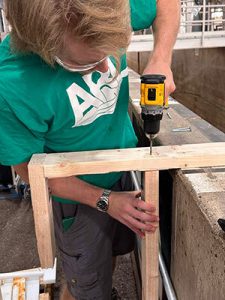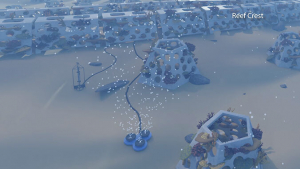
A data analyst at the University of Hawaiʻi at Mānoa Applied Research Lab (ARL at UH) was selected for the highly competitive National Science Foundation (NSF) Graduate Research Fellowship Program. This five-year fellowship will cover tuition and provide a stipend at any eligible graduate program for which the awardee is selected.

Joining ARL at UH, Ian Robertson became involved with the Rapid Resilient Reefs for Coastal Defense (R3D) project. One of his contributions to the project was the development of a cutting-edge machine learning algorithm aimed at characterizing how waves break over artificial structures. His work has helped to advance the understanding of wave dynamics and holds promise for improving coastal defense strategies.
“When I started at ARL, I had limited hands-on experience in oceanography despite my math degree,” said Robertson. “However, over the past three years, I’ve had the opportunity to work on various projects and pick up invaluable skills.”
Robertson is continuing his education through the Massachusetts Institute of Technology and Woods Hole Oceanographic Institution Joint Program by pursuing a PhD in physical oceanography.
“Collaborating with experts in different fields has been instrumental in my research journey,” Robertson said. “Working with colleagues from ocean engineering, marine biology, and various institutions has been eye-opening. It’s essential to bridge the gap between scientists and engineers to develop holistic solutions to complex oceanographic challenges.”
More on R3D

ARL at UH is leading the development of a hybrid coral reef that is designed to protect coastal infrastructure from flooding, erosion and storm damage. The goal of this project is to provide alternatives to coastline hardening solutions, such as traditional breakwaters, jetties or sea walls, with a nature-based solution that incorporates a living ecosystem with a wave-attenuating base structure.
“Coral reefs are in a dire state worldwide and the impact goes beyond the losses of beaches and coastal property,” said R3D Principal Investigator Ben Jones. “These losses negatively affect local economies and Indigenous communities throughout the Pacific who have subsisted off reefs for generations. Ian’s research will help us understand the nature of the waves breaking near our hybrid reef and will ensure that we can reestablish a thriving, diverse coral reef community in areas where degraded reefs currently persist.”
ARL at UH is partnering with the Hawaiʻi Institute of Marine Biology and the UH Mānoa Department of Ocean and Resources Engineering as well as a local industry partner, Makai Ocean Engineering, to develop this living breakwater that can reduce wave energy, encourage coral settlement and growth, and survive marine heatwaves. In December 2023 ARL at UH was awarded phase two of the project which includes deployment of a prototype structure in Kailua Bay near Ulupaʻu crater on Mōkapu peninsula.

